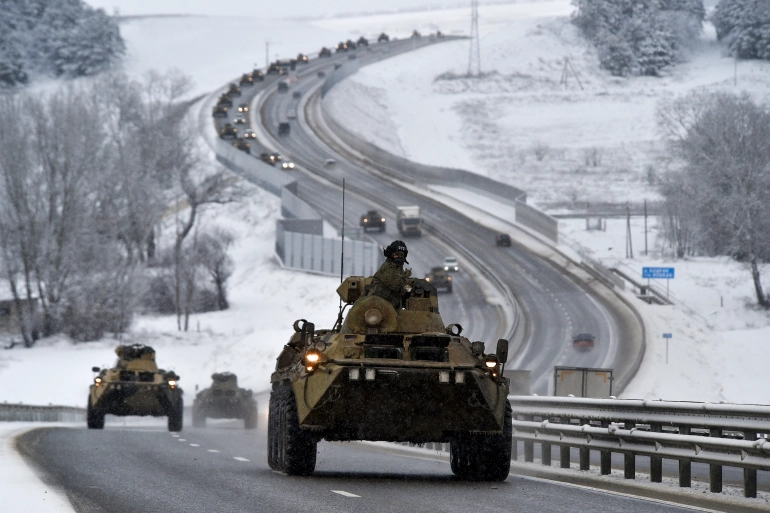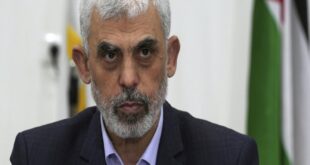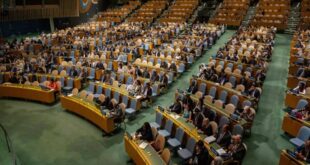
Over the past year, as Russia amassed troops along its border with Ukraine, there have been growing fears of an imminent invasion. A number of Western leaders have repeatedly warned of this possibility.
Moscow has denied that it is making such plans, although it has not withdrawn its troops. Some observers have interpreted these Russian statements as untruthful and even accused the Russian authorities of preparing a false-flag operation.
A closer examination of Russia’s geopolitical behaviour in the past two decades, however, demonstrates that its officials might not necessarily be trying to deceive the international community. A full-scale war in Ukraine does not really fit into how the Kremlin has used hard power in its geopolitical games. The examples of Georgia, Syria, Libya, and (so far) Ukraine, show that it pursues a cost-efficient policy.
In each case, the Russian government has had a clear understanding of the risks on the ground. It has made a careful cost-benefit analysis and established clear and limited goals for the use of hard power. The cost-effective policy is a conscious choice because the Russian decision-makers know well that they do not have the means to maintain a large-scale war.
From Georgia to Syria and Libya
Russia, undoubtedly, made these cost calculations before the 2008 Georgia war, in which it intervened on the side of separatist forces in the breakaway regions of South Ossetia and Abkhazia against the Georgian government.
Back then, the Russian forces did not really face a formidable adversary and were able to easily defeat the Georgian forces in South Ossetia in days. The Russian troops then crossed into Georgia proper, ransacked the city of Gori and halted. Once the limited goal of pushing back Georgian forces from South Ossetia and Abkhazia was achieved, Moscow was open to European mediation.
The Russian troops could have completely cut Georgia in two, gained control of the precious transit oil and gas pipelines from Azerbaijan to Turkey, and paralysed the economy and political system. All these gains would have been valuable bargaining chips to force the Georgian government to recognise the independence of the separatist regions. Yet, the regional and global costs of these advancements would have been too high for Russia, so it stopped at a limited military operation.
A similar calculation was made before the intervention in Syria to prop up Bashar al-Assad’s regime in 2015. Moscow did not deploy a massive land force – as, for example, the US did in Afghanistan and Iraq – and instead limited its hard power to fighter jets, special forces, mercenaries, military advisers, and navy ships. In order to lower the risk further, the Russian diplomats engaged with various stakeholders, such as the US, Israel, and Turkey at different stages of the war. This engagement ensured that rebel forces were not supplied with anti-aircraft weapons, which guaranteed the air supremacy of Russian and Syrian forces.
Russia’s extensive bombardment of areas under rebel control provided effective air cover for Syrian regime forces and enabled them to shift from defence to offence. In a matter of months, Damascus, backed by Russian and Iranian forces, was able to regain control of large swaths of territory and, in the following three years, forced rebels out of several strongholds and limited their presence to the northwest of the country. Russia achieved its goal – preserving al-Assad’s regime – with minimal costs, both in terms of casualties and funding, and even made diplomatic gains against Western powers on the international scene.
When it was invited to intervene in the Libyan conflict, Moscow made an even smaller commitment and still achieved a lot. The Russian involvement was limited to the deployment of Russian mercenaries and the supply of weapons to renegade General Khalifa Haftar, who controls the eastern part of the country. Although his offensive on the capital Tripoli eventually failed, Russia did not find itself on the losing side. In fact, it managed to position itself as a mediator between the Libyan government and Haftar and gained a prominent place on the negotiating table, along with other stakeholders, both Western and regional.
Moscow’s calculations in Ukraine
When Russia intervened in Ukraine in 2014, following the pro-democracy Maidan revolution against Ukrainian President Viktor Yanukovych, it took a similar cost-effective approach. It did not launch a massive invasion of its much weaker neighbour. Instead, it deployed forces without insignia, while denying doing so, to the Crimean Peninsula, where the strategic military assets it wanted to secure were located – namely the headquarters and facilities of its Black Sea Fleet.
It then undertook a relatively bloodless takeover of this Ukrainian territory by setting up a referendum and presenting the annexation of Crimea as fulfilling the “will of the people”. It did not go any further in trying to conquer Ukrainian territory. A full-scale war was not the method and the occupation of Kyiv was not the goal.
Instead, to punish and subdue the new government in Kyiv, it set up separatist forces in the eastern part of the country, funded and armed them and sent some troops for support. It relied heavily on mercenaries and Russian soldiers not wearing insignia in order to deny its involvement and present the events on the ground as a spontaneous uprising. Thus, Moscow earned leverage over Ukraine at a minimum cost.
Today, eight years after the start of the conflict, Russia is amassing a large number of troops along the border. Has it changed its approach? That is unlikely. Despite Western predictions of an imminent invasion, it is questionable that the intended target of the Russian military mobilisation is Ukraine.
Moscow has not lost its leverage over Kyiv in the Donbas region, as it is nearly impossible for the Ukrainian army to end the separatist movement there while it enjoys Russian support. If the Kremlin wants to pressure the Ukrainian government, it could simply do so by escalating the conflict in the east, which does not necessitate a large deployment of Russian troops.
In fact, just the large military presence along the border is already doing enough damage to Ukraine: severely undermining its economy. Furthermore, the Russian authorities do not see a threat emanating from a “democratic Ukraine”, as the Maidan by now has lost its appeal within Russian pro-democracy circles.
Therefore, the amassing of troops along the Russia-Ukraine border is not targeting Kyiv, but the West. Moscow wants to force Western countries to finally sit down for negotiations on issues of European security. And this strategy seems to be working. Since 1991, this is the first time the West has engaged seriously with Russia to discuss European security.
Russian officials undoubtedly understand that Ukraine will not enter NATO, as there is no enthusiasm for it within the military organisation right now. What the Kremlin worries about is whether the US will deploy missiles or missile defence elements on Ukrainian soil.
Moscow wants arrangements to be made on several issues, including halting the deployment of intermediate-range ballistic missiles in Europe and limiting military exercises in close proximity to Russian borders. On December 17, it put out a proposal outlining its demands to both NATO and the United States.
So what happens next?
Until the Kremlin feels that it has received the necessary security guarantees, it will likely continue to keep military pressure on the Ukraine border. It might deploy intermediate-range ballistic missiles in Belarus or even escalate in other hotspots in its immediate neighbourhood, such as Georgia. It may organise war games closer to Western Europe, as it did with recent naval exercises near Ireland. It could even show off military capabilities closer to US borders, by deploying hypersonic missiles on its submarines or setting up long-range missiles in Venezuela, for example.
All these measures, however, will fall within Russia’s cost-effective calculations. That means that a large-scale invasion or war is highly unlikely.

By Harun Yilmaz Researcher focusing on Ukraine, the Caucasus, and Central Asia




 World Opinions Débats De Société, Questions, Opinions et Tribunes.. La Voix Des Sans-Voix | Alternative Média
World Opinions Débats De Société, Questions, Opinions et Tribunes.. La Voix Des Sans-Voix | Alternative Média




